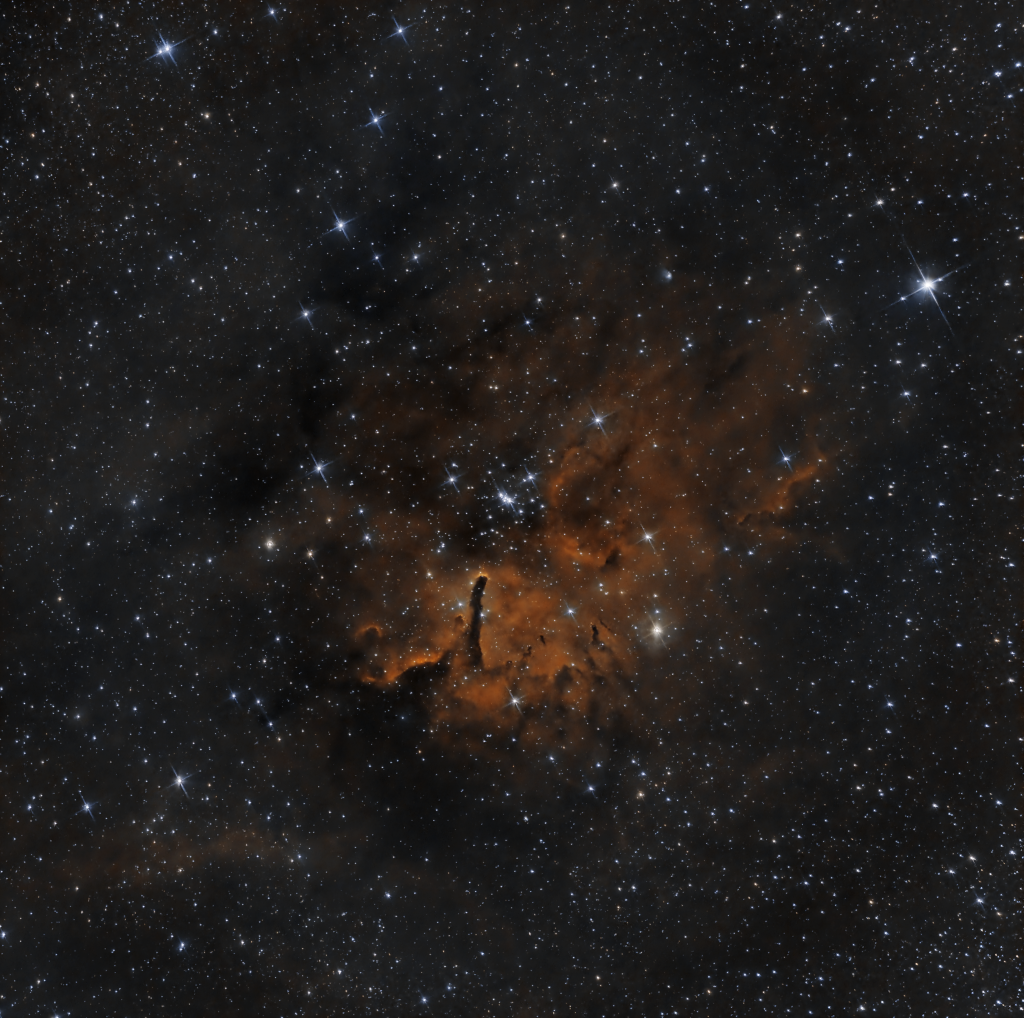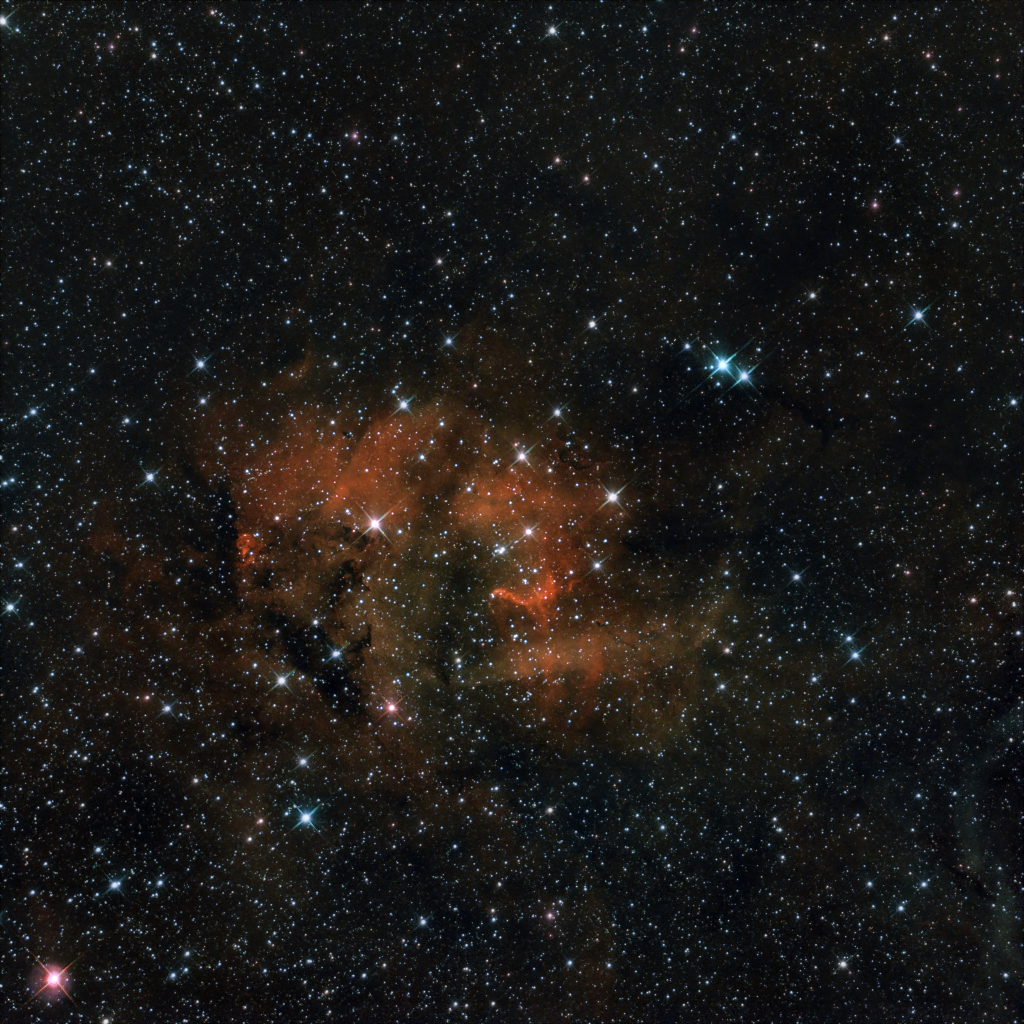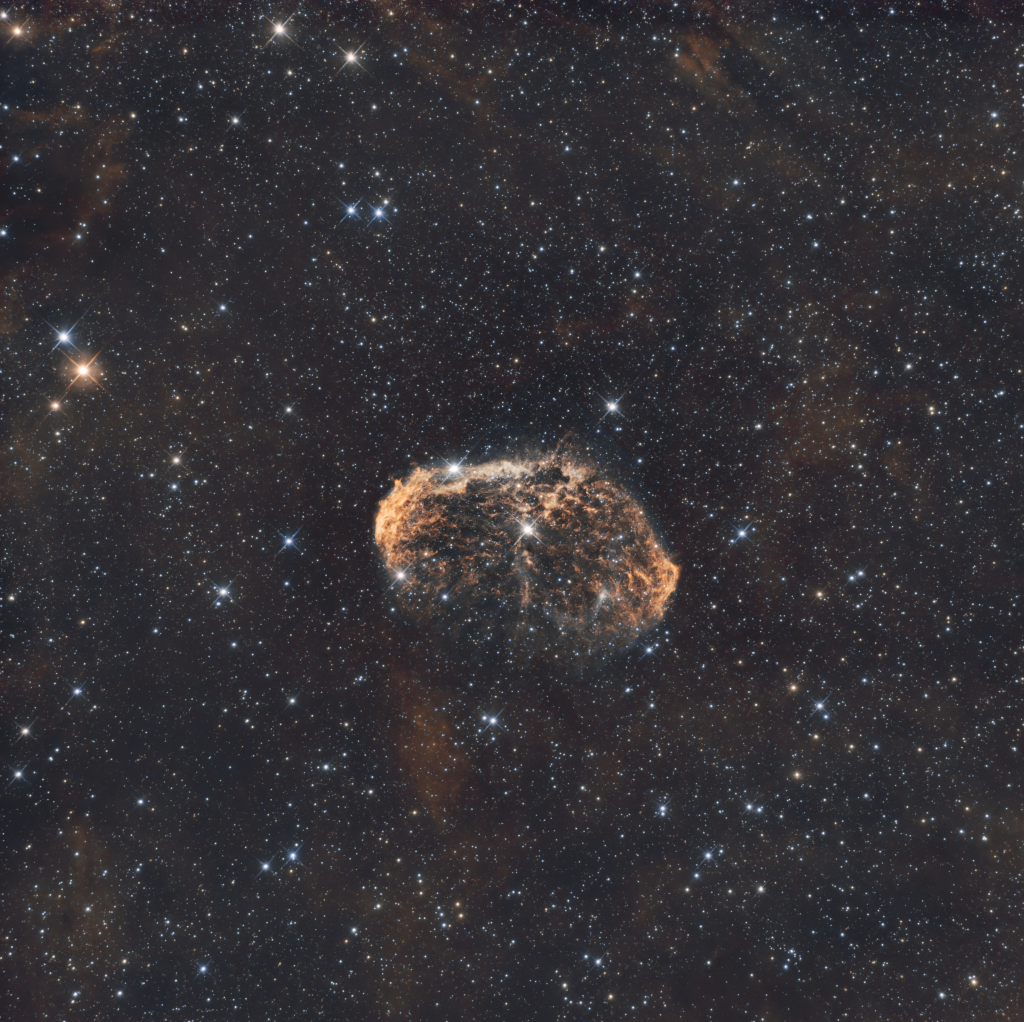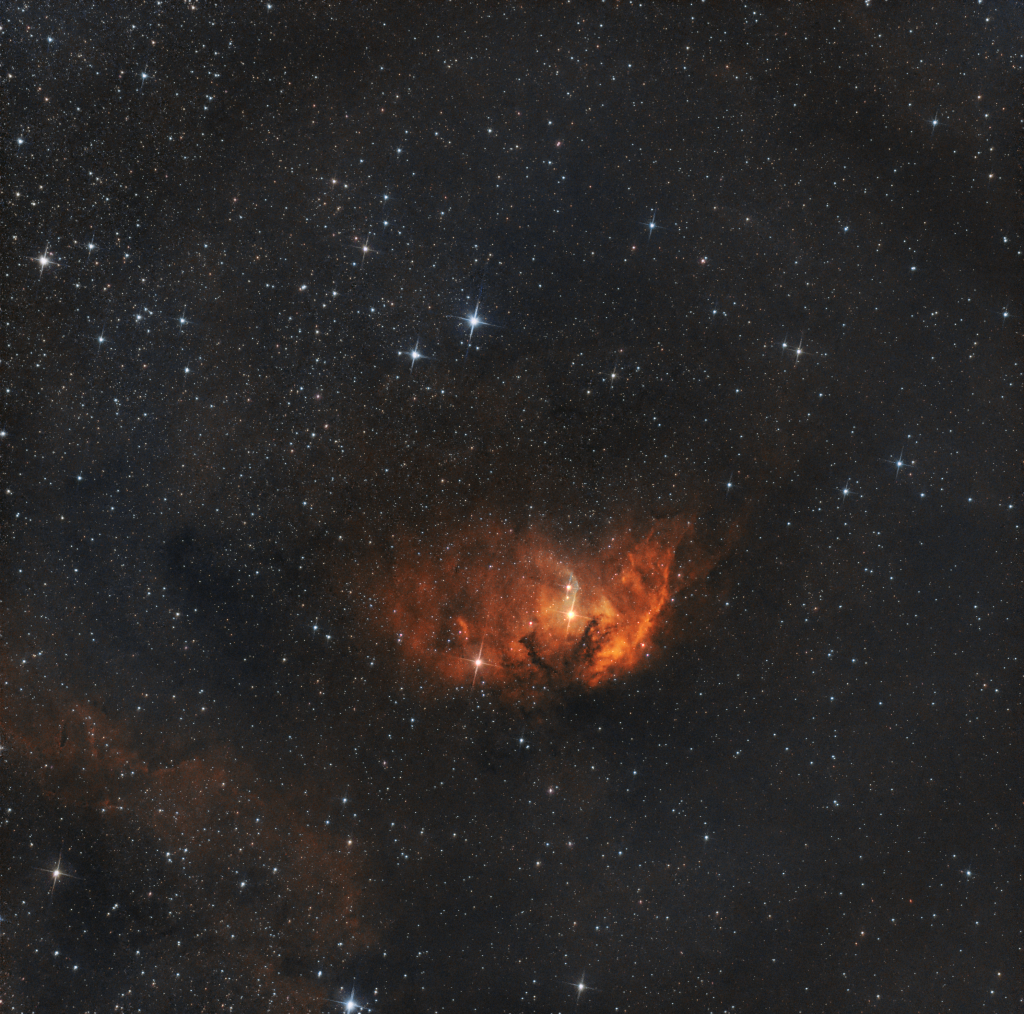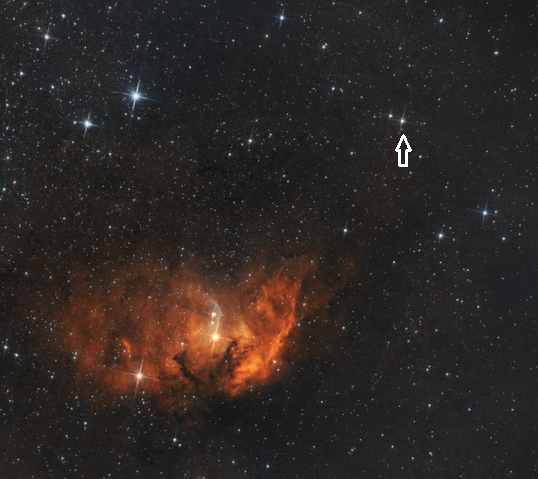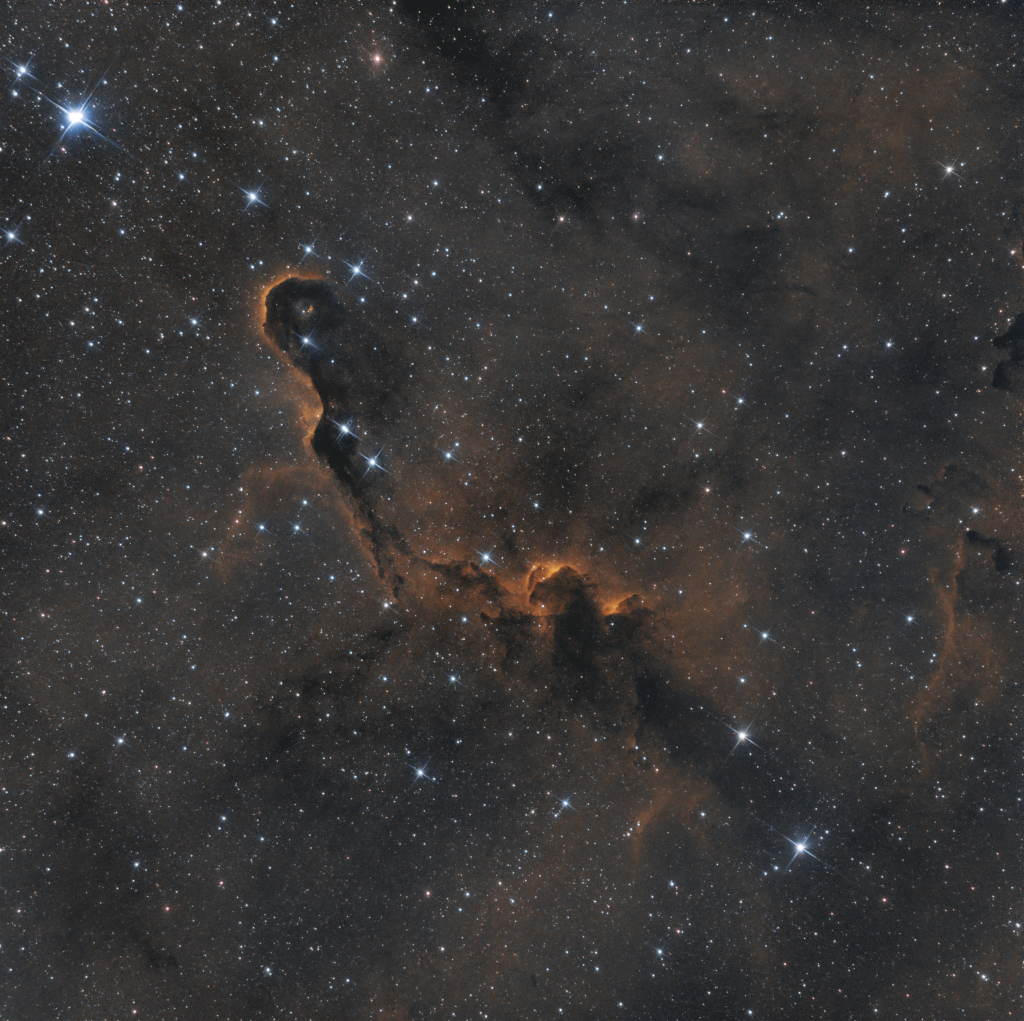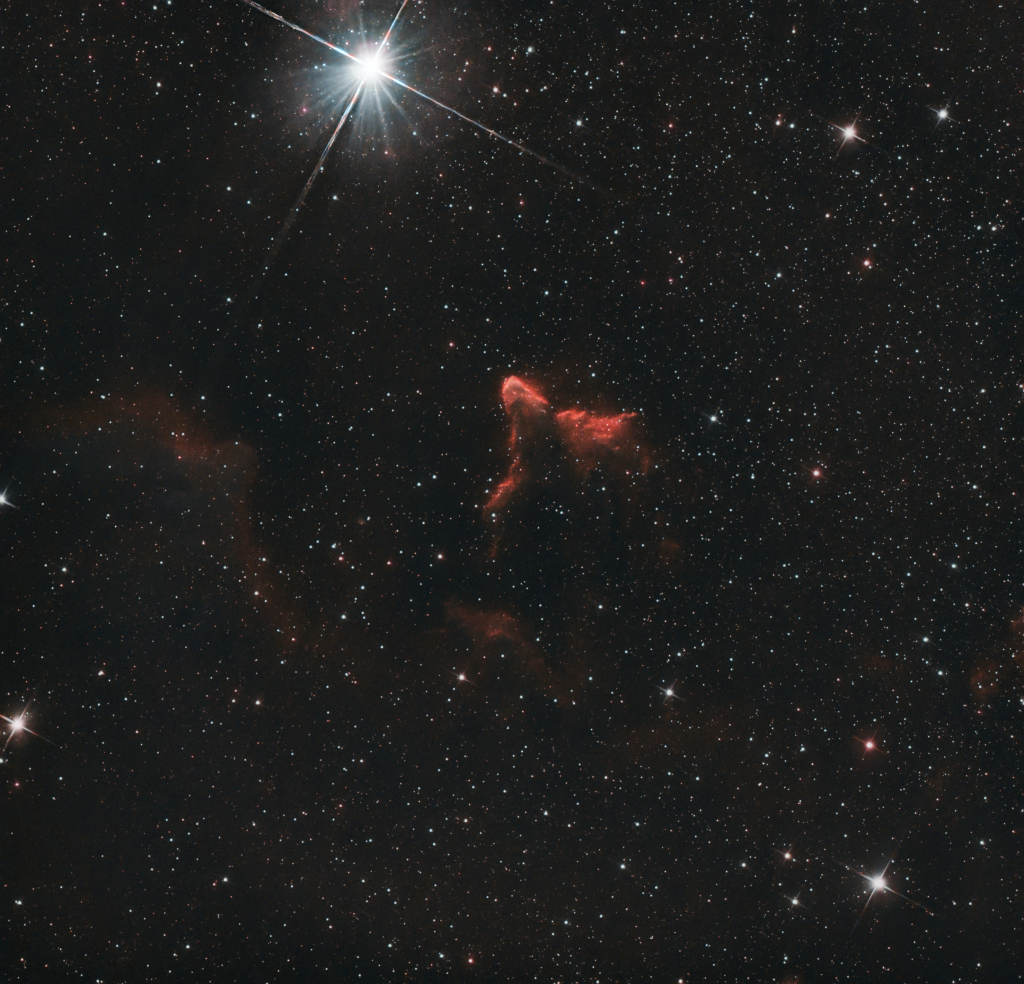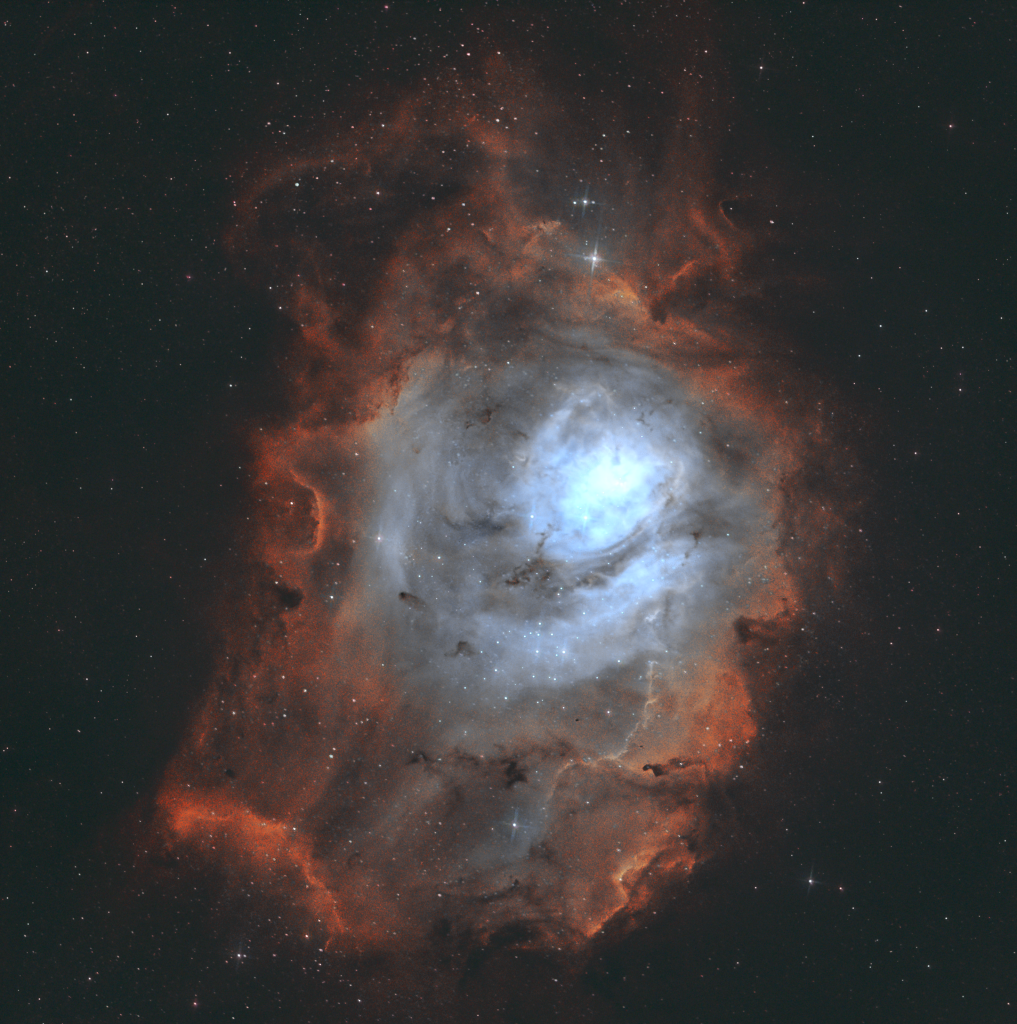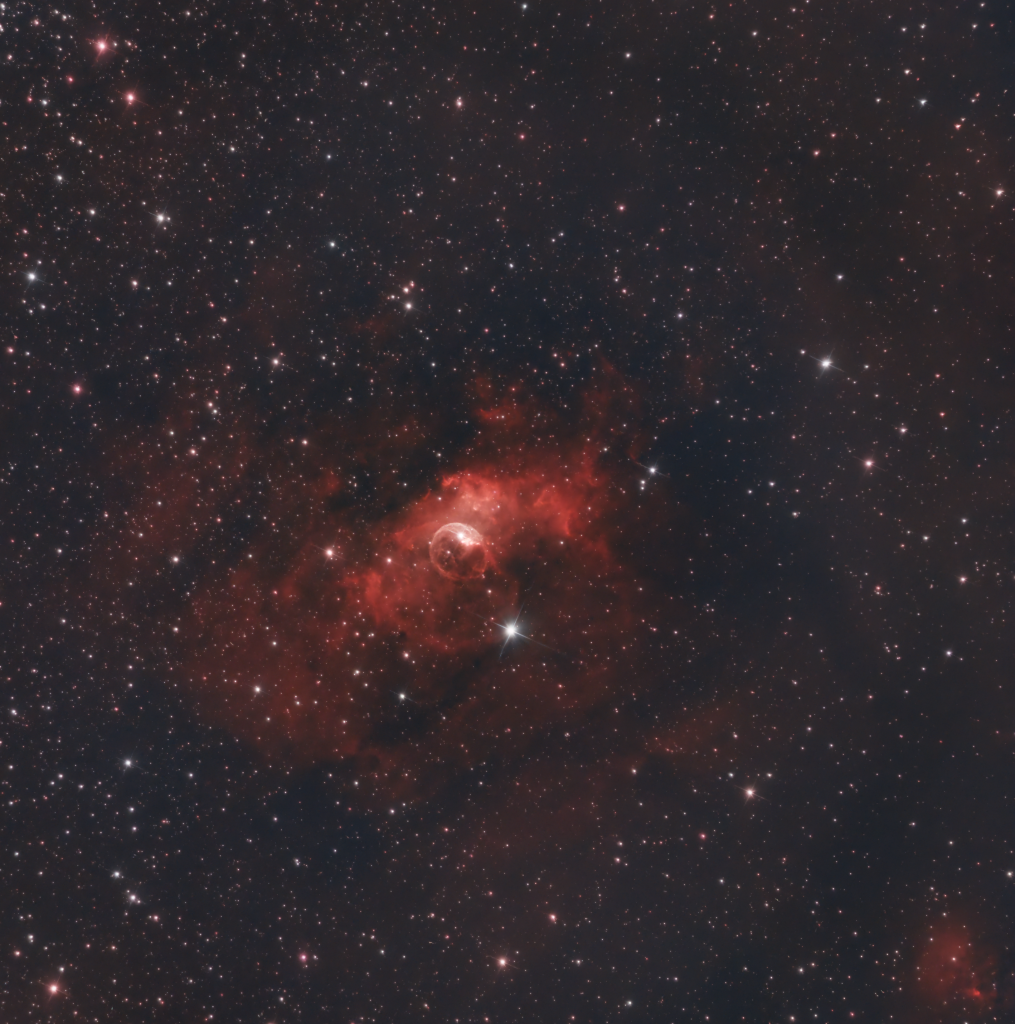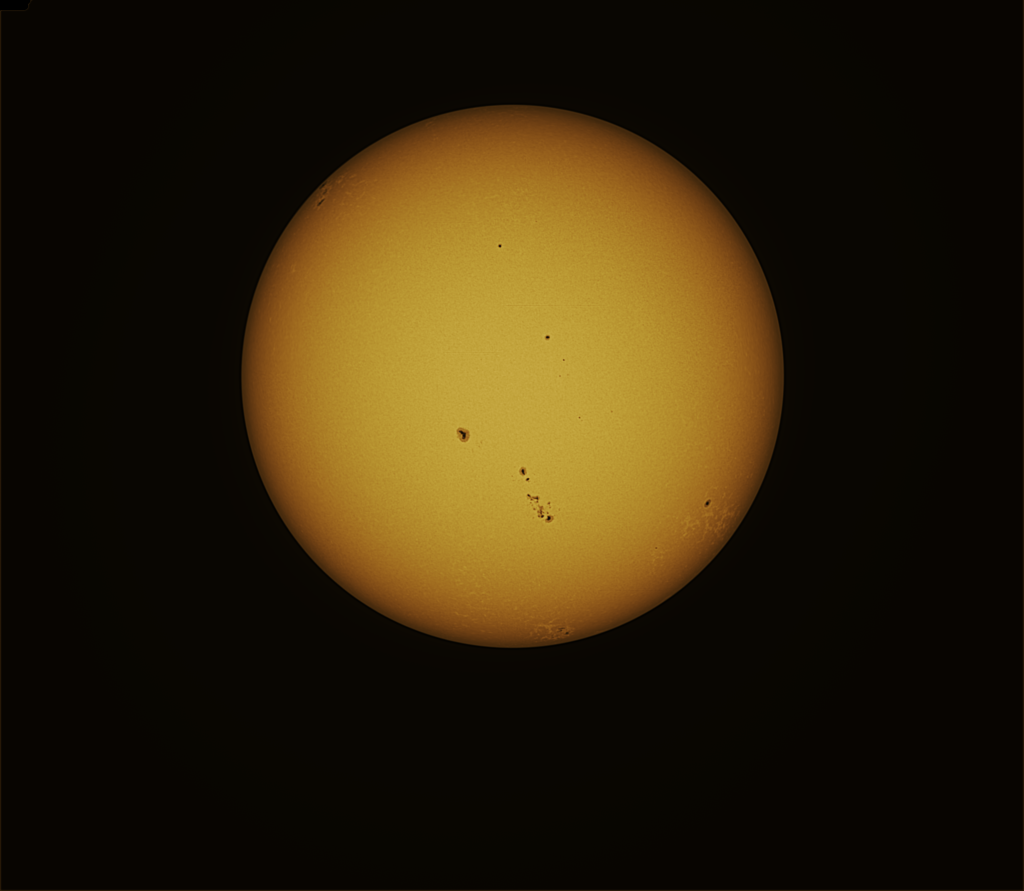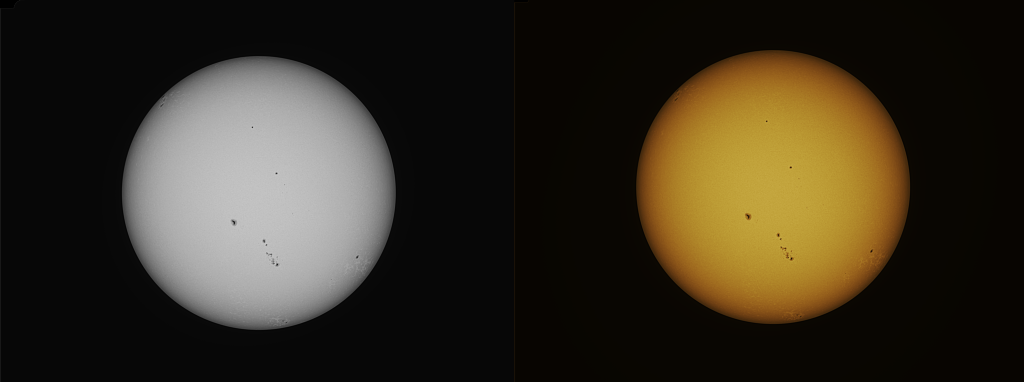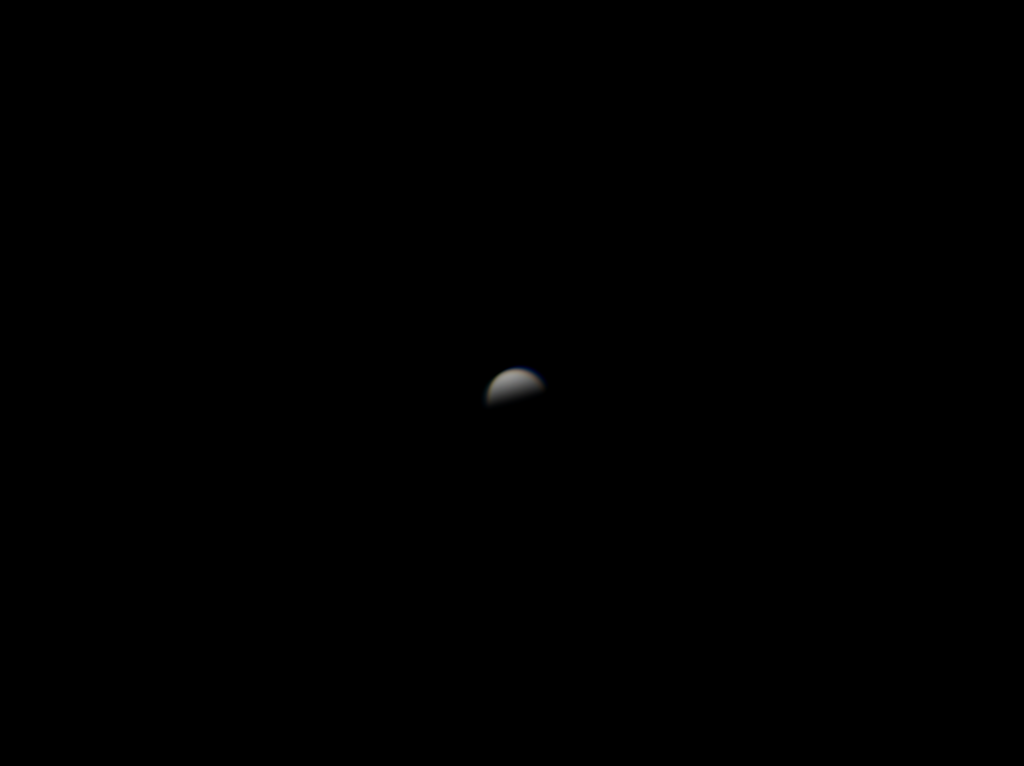As time flies by
I didn’t image for like 4 weeks or so and the sky looks already very different. Vega is up high, Andromeda is appearing and Jupiter & Saturn have joined the night sky spectacle.
I remember as a kid feeling summer lasting forever, blissful times without school or other obligations. But in today’s world time just flies by.
Yesterday I pointed my scope at NGC6820 and NGC6823. The latter is a small open cluster sitting in the former, an emission nebula. They both reside in Vulpecula, some 6000 light years away from us.
